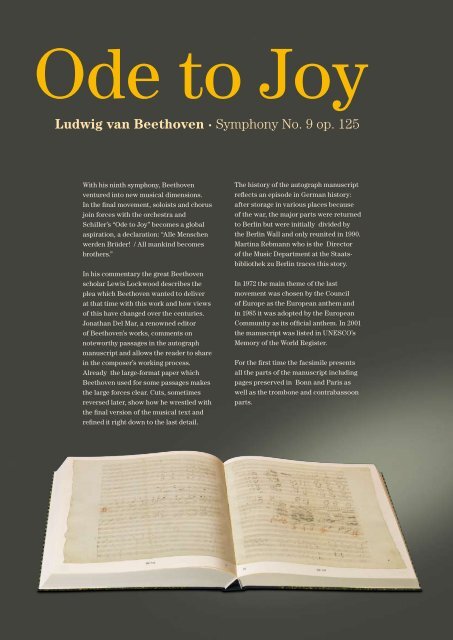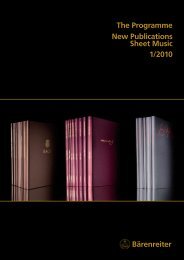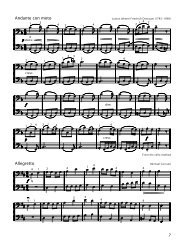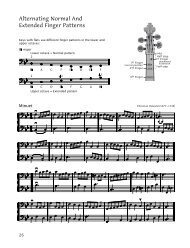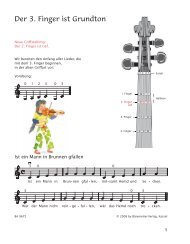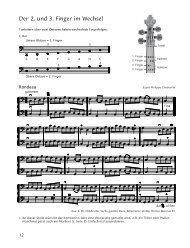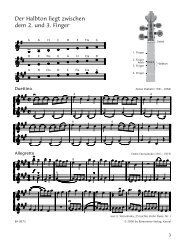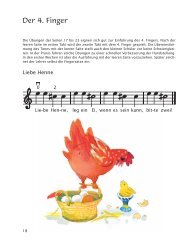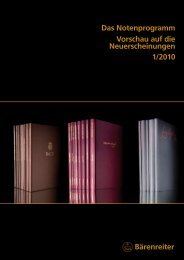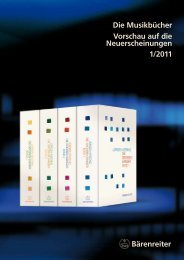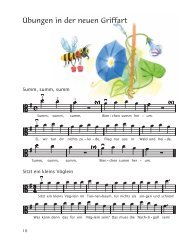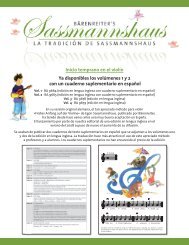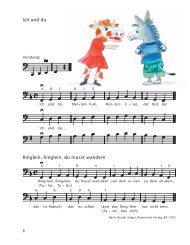Bärenreiter The Programme New Publications Sheet Music 2/2010
Bärenreiter The Programme New Publications Sheet Music 2/2010
Bärenreiter The Programme New Publications Sheet Music 2/2010
You also want an ePaper? Increase the reach of your titles
YUMPU automatically turns print PDFs into web optimized ePapers that Google loves.
Ode to Joy<br />
4<br />
Ludwig van Beethoven · Symphony No. 9 op. 125<br />
With his ninth symphony, Beethoven<br />
ventured into new musical dimensions.<br />
In the final movement, soloists and chorus<br />
join forces with the orchestra and<br />
Schiller’s “Ode to Joy” becomes a global<br />
aspiration, a declaration: “Alle Menschen<br />
werden Brüder! / All mankind becomes<br />
brothers.”<br />
In his commentary the great Beethoven<br />
scholar Lewis Lockwood describes the<br />
plea which Beethoven wanted to deliver<br />
at that time with this work and how views<br />
of this have changed over the centuries.<br />
Jonathan Del Mar, a renowned editor<br />
of Beethoven’s works, comments on<br />
noteworthy passages in the autograph<br />
manuscript and allows the reader to share<br />
in the composer’s working process.<br />
Already the large-format paper which<br />
Beethoven used for some passages makes<br />
the large forces clear. Cuts, sometimes<br />
reversed later, show how he wrestled with<br />
the final version of the musical text and<br />
refined it right down to the last detail.<br />
<strong>The</strong> history of the autograph manuscript<br />
reflects an episode in German history:<br />
after storage in various places because<br />
of the war, the major parts were returned<br />
to Berlin but were initially divided by<br />
the Berlin Wall and only reunited in 1990.<br />
Martina Rebmann who is the Director<br />
of the <strong>Music</strong> Department at the Staatsbibliothek<br />
zu Berlin traces this story.<br />
In 1972 the main theme of the last<br />
movement was chosen by the Council<br />
of Europe as the European anthem and<br />
in 1985 it was adopted by the European<br />
Community as its official anthem. In 2001<br />
the manuscript was listed in UNESCO’s<br />
Memory of the World Register.<br />
For the first time the facsimile presents<br />
all the parts of the manuscript including<br />
pages preserved in Bonn and Paris as<br />
well as the trombone and contrabassoon<br />
parts.


